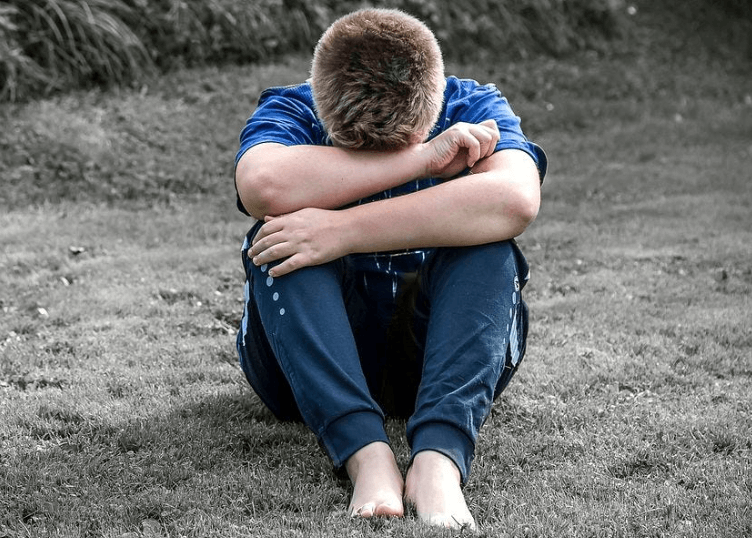In the complex tapestry of managing school safety, a thread dedicated to de-escalating crises is not only essential but also one of the most intricate to weave. Crisis situations in educational institutions can vary from conflicts between students to severe behavioral outbursts inside the classroom or on school property. Understanding and employing effective de-escalation techniques are crucial for ensuring the well-being of students and staff, and maintaining a conducive learning environment.
This informative guide unpacks the art and essential methodologies of de-escalation in the educational setting, offering leaders and frontline staff the insight to diffuse volatile situations with confidence and skill.
Why De-Escalation Is Vital in School Crisis Management
It is not a stretch to say that the impact of unchecked, escalating crises in schools can be devastating. Not only do they pose an immediate threat to the safety of individuals involved, but they also create an environment of fear and stress that can be as damaging in the long term as the immediate crisis. Additionally, the consequences of crisis situations can extend to educational outcomes, mental health, and public perception of the school’s safety.
Understanding the Psychology Behind Crisis Behavior

Before we can effectively de-escalate, it’s crucial to understand the psychology that underpins individuals’ behavior during a crisis. Stress, fear, a sense of loss of control, and past experiences all play significant roles in how an individual might respond in a volatile situation.
The Do’s and Dont’s of De-Escalation Techniques
De-escalation is both an art and a science. There are strategies that can be taught and tactics that can be employed, but a successful de-escalation hinges on the acute emotional intelligence of those managing the crisis. Leaders and staff must navigate the situation with a deep understanding of the principles of safety, the needs of those involved, and the overarching goal to establish dialogue and a sense of safety.
Active Listening and Validation
One of the initial steps in de-escalation is active listening. By giving the individual your full attention and acknowledging the emotions they are expressing, you lay the groundwork for potential dialogue and resolution. Validating their experience, even if you don’t agree with their actions or stance, can help in grounding the individual and making them feel heard.
Non-Threatening Presence and Body Language
Your presence and body language can either diffuse or exacerbate a situation. Ensuring your non-verbal cues are not perceived as threatening and remaining calm can provide a model for the individual in crisis to mirror, often aiding in their own de-escalation.
Building Rapport and Finding Common Ground
Discovering common ground with the individual can help in establishing rapport and fostering a connection through shared experiences or common goals. Building such bridges can shift the focus from the immediate crisis to a more cooperative problem-solving approach.
Clear and Respectful Communication
It’s paramount to communicate with clarity, empathy, and respect. Use simple, direct language to avoid misunderstandings. Show empathy in your tone and body language, acknowledging the individual’s feelings while maintaining a stance of respect for both parties involved.
Problem-Solving Together
Approaching the situation as a problem to solve jointly can empower the individual and lead to creative, non-confrontational solutions. Working together can reduce their perception of isolation and combativeness, making way for a shared path to resolution.
Safety As a Shared Priority
Expressing and demonstrating that safety is a shared priority is instrumental in de-escalation. When the individual perceives the responder as a collaborative force for security, it is more likely that the de-escalation will be effective.
Offering Choices and Demonstrating Fairness
Providing the individual with choices, within reasonable parameters, can help them regain a sense of control over their situation and, by extension, their behavior. Fairness in the resolution process goes a long way in the individual’s acceptance of the outcome, reducing the likelihood of further crises.
Training and Implementation of De-Escalation Methods
De-escalation techniques are perishable skills that require consistent training and practice. Establishing a regular training cadence, drills, and a structured review of case studies can ensure that staff is not only familiar with the methods but also adept at applying them in real-time crises.
Scenario-Based Training
Practicing de-escalation techniques in simulated scenarios can help staff acclimate to the stress and critical thinking required in a real crisis. These scenarios should encompass a range of potential crises and considerations.
Team Approach
De-escalation is seldom a one-person show. Forming response teams composed of individuals with diverse skill sets and levels of experience can ensure a multifaceted approach to crisis management, where the strengths of one complement the limitations of another.
After-Action Reviews
Learning from experiences, both successes, and challenges, is critical in the growth and refinement of de-escalation capability. After-action reviews should be conducted with sensitivity and openness, providing constructive feedback that encourages continuous improvement.
Leveraging Technology and Tools for Enhanced De-Escalation
The role of technology in school safety has been expanding rapidly, and the realm of de-escalation is no exception. From communication tools to behavior tracking systems, there are various digital aids that can enhance the efficiency and efficacy of de-escalation efforts.
Communication Tools
Timely communication is a key component of crisis management. Utilizing tools such as two-way radios, mobile applications, and crisis notification systems can ensure that the right information reaches the right people at the right time, facilitating a coordinated response and reducing ambiguity and potential for errors.
Behavior and Incident Tracking Systems
Leveraging technology solutions that track incidents, behaviors, and trends over time can provide invaluable data for preemptive interventions and tailored de-escalation strategies. These systems can also offer insights into the effectiveness of de-escalation efforts and areas that may require further attention or training.
Personal Protective Equipment and Physical Safety Measures
Physical safety measures, including personal protective equipment for staff, secure rooms or spaces, and access control systems, are also part of the de-escalation toolkit. By ensuring the physical safety of all involved, these measures can reduce the level of threat perceived by an individual in crisis, contributing to the de-escalation process.
Integrating De-Escalation with School Policies and Culture
For de-escalation efforts to be truly effective, they must be ingrained in the school’s policies and culture. From the top-down, there should be a clear commitment to prioritizing de-escalation as the initial response to crises, where appropriate.
Policy Development
Developing clear, consistent policies that outline the school’s approach to de-escalation, including expectations, methodologies, and standard procedures, can provide a framework for staff and students alike. These policies should be living documents, subject to review and updates as needed.
Creating a Culture of Safety and Support
Promoting a culture where safety and support are paramount can significantly reduce the frequency and severity of crises. This involves not only messaging and visuals around the school but also the fostering of relationships between staff and students that are built on trust and respect.
Community Involvement and Support
The school is a microcosm of a larger community. Involving parents, local law enforcement, and civic organizations in the development and support of de-escalation efforts can provide a more comprehensive and cohesive approach to crisis management, with shared responsibility.
Case Studies and Success Stories in De-Escalating School Crises
Examining real-life scenarios where de-escalation was successfully employed can offer valuable lessons and serve as inspiration for other schools. These case studies should highlight the specific techniques and strategies that were most effective, as well as any unique considerations or challenges that were overcome.
Learning From the Field
Sharing the learning and experiences of practitioners on the ground can lead to a more informed and prepared cohort of school staff. Video recordings, narratives, and interactive forums can be used to disseminate such experiences.
The Future of School Crisis De-Escalation
The landscape of school safety and crisis management is dynamic and continually evolving. The identification of new risk factors, changes in technology, and updates to psychological theory all will influence the de-escalation practices of tomorrow.
Research and Innovation
Investing in research and innovation is crucial in staying ahead of potential crises. Technologies like virtual reality for training and artificial intelligence for early crisis detection could revolutionize how schools approach de-escalation.
Policy Advocacy and Standards Development
Advocacy for policies and standards that support de-escalation efforts is an ongoing necessity. This includes lobbying for resources and recognition of the role that de-escalation plays in overall school safety, as well as developing best practices that can be shared across the educational community.
In conclusion, the act of de-escalating crisis behavior in schools is a multifaceted and high-stakes endeavor. It requires a blend of expertise, readiness, empathy, and a willingness to engage in continuous learning and improvement. By investing in resources, training, and organizational culture that supports de-escalation, schools can not only manage crises effectively but also foster environments where the safety and well-being of all is a shared priority.

















+ There are no comments
Add yours